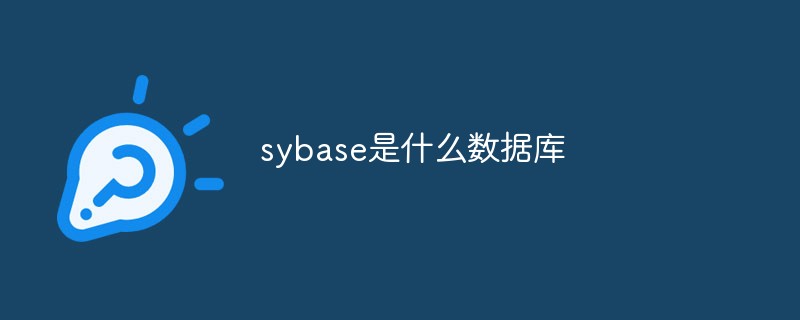
Using the database for data permission control in React Query
As a powerful React state management library, React Query provides many convenient features to manage applications The data. One of the important features is to support interaction with the database to achieve data permission control. This article will introduce how to use the database for data permission control in React Query and provide some specific code examples.
1. Database design
Before we start, we need to design our database model first. Suppose we have a simple blog system with two main data tables: user table and article table. The user table stores basic information about users, and the article table stores articles published by users. We hope to implement the following two permission controls:
- Users can only view articles published by themselves.
- Administrators can view all articles.
In terms of database design, we can add an additional field to the article table to represent the owner of the article. This field can be a unique identifier for the user, such as the user's ID. At the same time, we can also add a field to the user table to represent the user's role. The administrator's role can be set to a special value, such as "admin". In this way, we can control permissions based on the user's role and the owner of the article.
2. Configure React Query
Before using React Query, we need to configure its communication method with the backend. React Query supports multiple communication methods, such as REST, GraphQL, etc. In this example, we will use a RESTful API to communicate with the backend. We can use axios to make network requests. Here is a simple configuration example:
import { QueryClient, QueryClientProvider } from 'react-query';
import axios from 'axios';
const queryClient = new QueryClient();
const API_BASE_URL = 'http://localhost:3000/api'; // 后端 API 地址
// 创建一个 axios 实例
const api = axios.create({
baseURL: API_BASE_URL,
});
// 设置请求拦截器,在每个请求中添加身份验证信息
api.interceptors.request.use((config) => {
const token = localStorage.getItem('accessToken'); // 从本地存储中获取访问令牌
if (token) {
config.headers.Authorization = `Bearer ${token}`;
}
return config;
});
// 使用 QueryClientProvider 包裹应用程序的根组件
ReactDOM.render(
<QueryClientProvider client={queryClient}>
<App />
</QueryClientProvider>,
document.getElementById('root')
);In the above code, we first create a queryClient instance and configure the base URL of the backend API. We then created an axios instance and set up a request interceptor to add authentication information to each request. Finally, we wrap the application's root component with QueryClientProvider to use React Query throughout the application.
3. Implement data permission control
Next, we will show how to implement data permission control in React Query. First, we need to define a query function for getting a list of articles. This query function will return different data based on the user's role and the owner of the article.
import { useQuery } from 'react-query';
// 获取文章列表的查询函数
const fetchPosts = async () => {
const currentUser = localStorage.getItem('currentUser'); // 获取当前用户
const role = currentUser.role; // 获取当前用户的角色
let url = '/posts';
if (role === 'admin') {
// 管理员可以查看所有文章
url = '/posts?all=true';
} else {
// 用户只能查看自己的文章
const userId = currentUser.id; // 获取当前用户的 ID
url = `/posts?userId=${userId}`;
}
const response = await api.get(url); // 发送 GET 请求获取文章列表
return response.data;
};
// 在组件中使用 useQuery 获取文章列表数据
const PostsList = () => {
const { data: posts, isLoading, isError } = useQuery('posts', fetchPosts);
if (isLoading) {
return <div>Loading...</div>;
}
if (isError) {
return <div>Error loading posts</div>;
}
return (
<ul>
{posts.map((post) => (
<li key={post.id}>{post.title}</li>
))}
</ul>
);
};In the above code, we first obtain the current user's information and role through localStorage. Then, different request URLs are constructed based on the user's role and the owner of the article. Finally, we use api.get(url) to send a GET request to obtain the article list data. Use the useQuery hook in the component to get the data and render the corresponding content based on the loading status.
4. Summary
Through the above steps, we successfully implemented data permission control in React Query. By designing the database model and writing corresponding query functions, we can return different data according to the user's role and the owner of the data. In this way, we can effectively protect user data and implement permission control in business logic. Of course, the specific implementation method can be adjusted and expanded according to actual needs. I hope this article will help you use the database for data permission control in React Query!
The above is the detailed content of Using database for data permission control in React Query. For more information, please follow other related articles on the PHP Chinese website!
 深入理解MySQL索引优化器工作原理Nov 09, 2022 pm 02:05 PM
深入理解MySQL索引优化器工作原理Nov 09, 2022 pm 02:05 PM本篇文章给大家带来了关于mysql的相关知识,其中主要介绍了关于索引优化器工作原理的相关内容,其中包括了MySQL Server的组成,MySQL优化器选择索引额原理以及SQL成本分析,最后通过 select 查询总结整个查询过程,下面一起来看一下,希望对大家有帮助。
 sybase是什么数据库Sep 22, 2021 am 11:39 AM
sybase是什么数据库Sep 22, 2021 am 11:39 AMsybase是基于客户/服务器体系结构的数据库,是一个开放的、高性能的、可编程的数据库,可使用事件驱动的触发器、多线索化等来提高性能。
 visual foxpro数据库文件是什么Jul 23, 2021 pm 04:53 PM
visual foxpro数据库文件是什么Jul 23, 2021 pm 04:53 PMvisual foxpro数据库文件是管理数据库对象的系统文件。在VFP中,用户数据是存放在“.DBF”表文件中;VFP的数据库文件(“.DBC”)中不存放用户数据,它只起将属于某一数据库的 数据库表与视图、连接、存储过程等关联起来的作用。
 数据库系统的构成包括哪些Jul 15, 2022 am 11:58 AM
数据库系统的构成包括哪些Jul 15, 2022 am 11:58 AM数据库系统由4个部分构成:1、数据库,是指长期存储在计算机内的,有组织,可共享的数据的集合;2、硬件,是指构成计算机系统的各种物理设备,包括存储所需的外部设备;3、软件,包括操作系统、数据库管理系统及应用程序;4、人员,包括系统分析员和数据库设计人员、应用程序员(负责编写使用数据库的应用程序)、最终用户(利用接口或查询语言访问数据库)、数据库管理员(负责数据库的总体信息控制)。
 microsoft sql server是什么软件Feb 28, 2023 pm 03:00 PM
microsoft sql server是什么软件Feb 28, 2023 pm 03:00 PMmicrosoft sql server是Microsoft公司推出的关系型数据库管理系统,是一个全面的数据库平台,使用集成的商业智能(BI)工具提供了企业级的数据管理,具有使用方便可伸缩性好与相关软件集成程度高等优点。SQL Server数据库引擎为关系型数据和结构化数据提供了更安全可靠的存储功能,使用户可以构建和管理用于业务的高可用和高性能的数据应用程序。
 go语言可以写数据库么Jan 06, 2023 am 10:35 AM
go语言可以写数据库么Jan 06, 2023 am 10:35 AMgo语言可以写数据库。Go语言和其他语言不同的地方是,Go官方没有提供数据库驱动,而是编写了开发数据库驱动的标准接口,开发者可以根据定义的接口来开发相应的数据库驱动;这样做的好处在于,只要是按照标准接口开发的代码,以后迁移数据库时,不需要做任何修改,极大方便了后期的架构调整。
 数据库的什么是指数据的正确性和相容性Jul 04, 2022 pm 04:59 PM
数据库的什么是指数据的正确性和相容性Jul 04, 2022 pm 04:59 PM数据库的“完整性”是指数据的正确性和相容性。完整性是指数据库中数据在逻辑上的一致性、正确性、有效性和相容性。完整性对于数据库系统的重要性:1、数据库完整性约束能够防止合法用户使用数据库时向数据库中添加不合语义的数据;2、合理的数据库完整性设计,能够同时兼顾数据库的完整性和系统的效能;3、完善的数据库完整性有助于尽早发现应用软件的错误。
 mysql查询慢的因素除了索引,还有什么?Jul 19, 2022 pm 08:22 PM
mysql查询慢的因素除了索引,还有什么?Jul 19, 2022 pm 08:22 PMmysql查询为什么会慢,关于这个问题,在实际开发经常会遇到,而面试中,也是个高频题。遇到这种问题,我们一般也会想到是因为索引。那除开索引之外,还有哪些因素会导致数据库查询变慢呢?


Hot AI Tools

Undresser.AI Undress
AI-powered app for creating realistic nude photos

AI Clothes Remover
Online AI tool for removing clothes from photos.

Undress AI Tool
Undress images for free

Clothoff.io
AI clothes remover

AI Hentai Generator
Generate AI Hentai for free.

Hot Article

Hot Tools

mPDF
mPDF is a PHP library that can generate PDF files from UTF-8 encoded HTML. The original author, Ian Back, wrote mPDF to output PDF files "on the fly" from his website and handle different languages. It is slower than original scripts like HTML2FPDF and produces larger files when using Unicode fonts, but supports CSS styles etc. and has a lot of enhancements. Supports almost all languages, including RTL (Arabic and Hebrew) and CJK (Chinese, Japanese and Korean). Supports nested block-level elements (such as P, DIV),

ZendStudio 13.5.1 Mac
Powerful PHP integrated development environment

Zend Studio 13.0.1
Powerful PHP integrated development environment

SublimeText3 Chinese version
Chinese version, very easy to use

Safe Exam Browser
Safe Exam Browser is a secure browser environment for taking online exams securely. This software turns any computer into a secure workstation. It controls access to any utility and prevents students from using unauthorized resources.






